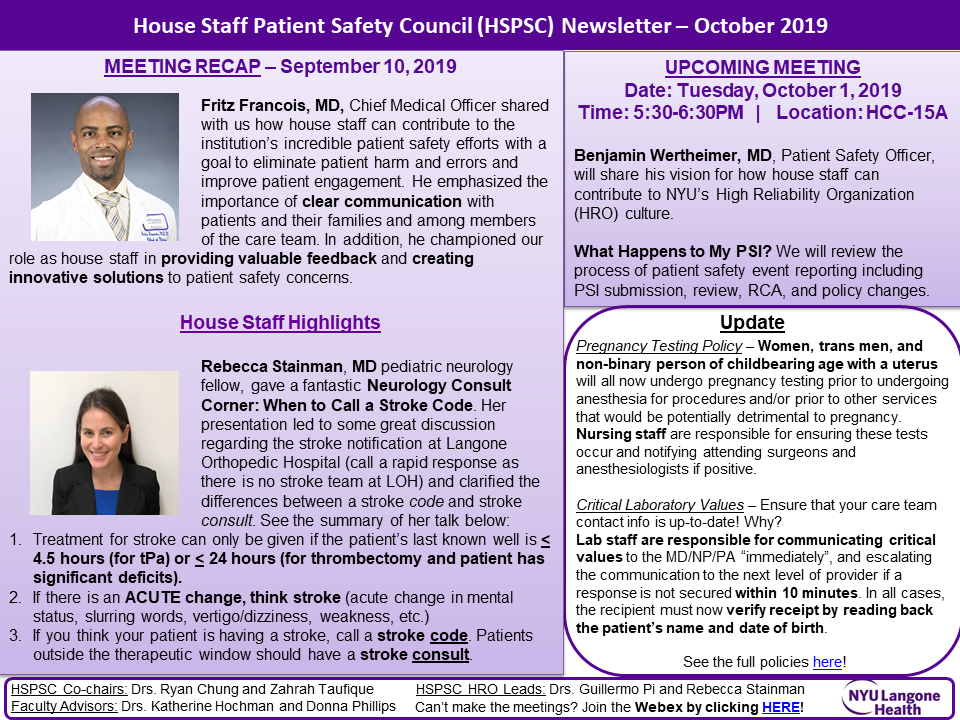Background: Engaging residents and fellows in institutional quality and safety initiatives is essential for providing optimal care for patients. However, there is no standardized way to accomplish this and the sharing of information is challenging. While patient safety councils exist across institutions, they feature differing curriculum and occur in a variety of formats: hospital-wide vs. department-wide, residents only vs. residents plus nursing and care managers. Moreover, the impact of a multidisciplinary house staff patient safety council has not been previously reported.
Purpose: Our goal is to share one institution’s model and experience, and report the impact of its house staff patient safety council.
Description: The House Staff Patient Safety Council (HSPSC) was created in 2015 to provide a bidirectional venue where trainees learn about patient safety and quality improvement initiatives, and also become empowered to share patient safety concerns, fostering collaboration. The council is composed of 1-2 representatives from each residency and fellowship program. Representatives also disseminate information from the meetings to their colleagues and participate in root cause analysis (RCA) processes at an institutional level. The council meets monthly and is facilitated by house staff. Two residents serve as the committee chairs along with two designated high reliability organization (HRO) house staff leaders who help highlight HRO behaviors and principles. Two faculty advisors with backgrounds in patient safety and quality provide faculty support.The HSPSC curriculum is driven by the house staff. Each meeting features an invited guest speaker (member of institutional leadership, a thought-leader, or other expert) and a “Consult Corner,” where a resident or fellow shares expertise and practical tips on a high-yield topic, such as “When to Call a Stroke Code.” Additionally, the council shares success stories of house staff-submitted patient safety intelligence (PSIs) that led to institutional change. Recent lessons from RCAs are also discussed. Prior to every meeting, a one-page newsletter is distributed to all house staff. The newsletter summarizes the previous meeting’s presentations, recognizes house staff for their quality and patient safety efforts, and provides updates on institutional policies (Figure 1).To measure the impact of the HSPSC, we surveyed all house staff. After attending a HSPSC meeting, trainees (N=34) reported they felt comfortable applying patient safety practices and HRO principles (74%), had a better understanding of institutional quality and safety initiatives (82%), were more likely to report back quality and safety information to their department (77%), submit a PSI (77%), and encourage a peer to submit a PSI (88%). Many reported applying what they learned at HSPSC to their daily work (62%). Even house staff who did not attend HSPSC meetings but read the monthly HSPSC newsletter (N=55) felt it was an effective format to relay information on quality and safety initiatives, consult corner highlights, and policy updates (33%).
Conclusions: A multidisciplinary, house staff-driven patient safety council that features speakers from institutional leadership and house staff empowers trainees to improve the quality and safety of patient care. Furthermore, the monthly newsletter is an efficient, effective, and wide-reaching format to disseminate information to house staff.

